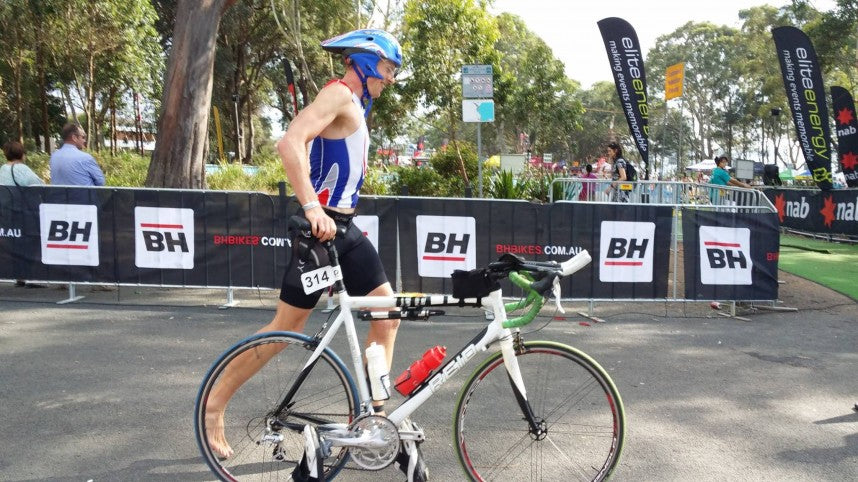Whether you're an aspiring pro, weekend warrior or long distance commuter, the term bonking or blowing up is likely to have been bandied about. If you haven’t come across it, blowing up is when you have emptied your body’s carbohydrate stores. It is easy to avoid bonking, especially on shorter rides but most people will have experienced increasing levels of fatigue in the latter stages of a longer ride. This is where your stores are drained and the liver can’t supply any more carbohydrate, forcing your body to rely more and more on fat as fuel which is harder to access.
This is why the Tour de France teams spend vast sums of money ensuring that their riders have the best experts designing nutrition plans and carefully observing their diets to ensure they perform at their peak each day. But for the rest of us riding and training at a more modest schedule what do we need to know and where do we start to properly fuel the body?
Start with what you drink
The most critical aspect of riding nutrition is hydration because if you become dehydrated everything else falls apart. Do you know how much you need to drink while riding to stay hydrated? Perhaps it is time to do a sweat rate test which is a pretty good way to get an idea what you really need to drink while cycling.
Typically people will sweat at a rate of between 1 – 1.5L of fluid per hour of moderate cycling. This will depend on the circumstances, riding in the middle of winter you are likely to sweat less than blasting up Falls Creek on a 35 degree day.
Do the sweat test:
- Take your body weight before a one-hour moderate intensity cycle.
- Keep a mental note of how much fluid you drank on the ride – but don’t eat food while carrying out this test.
- Weigh yourself again when you get home.
- Calculate the weight change and remember to add in the amount of liquid consumed during the workout. This is your sweat rate.
Sweat also contains electrolytes which need replacing on longer rides. Generally rides of less than one hour require only water, but on longer rides switch to a high quality electrolyte solution.
Meeting your calorie needs
Cycling is a high energy activity. On a high intensity ride your system is pushed pretty hard and can burn as much 15 calories (possibly more depending on your size) per minute. Taking a moderate view on your requirements of around 10 per minute, it is reasonable that you are burning around 600 calories an hour. If you have a GPS computer in which you put in your age, height and weight and it is combined with a heart rate belt you will get a decent estimate of the calories you used on a ride.
How much fuel can you digest riding?
If you are riding for two hours or less you should be able to ride without worrying too much about eating as your body has enough carbohydrate stored. But don’t forget your hydration needs. On longer duration rides you will need to eat, eat early and eat often.A good first trick is always starting with breakfast to top you up and have energy come on-stream as you ride.
Under peak conditions your body can absorb a maximum of 90g of carbohydrates per hour but it is usually closer to 60g per hour. This means you can digest between 200 and 400 calories an hour while riding.
What sort of food?
People often use gels as they are quick and easy to consume. You will need around two gels per hour and be careful to follow the instructions as they normally need to be consumed with water and may contain caffeine. There are also formulated drinks to have in your bottles which are similar to gels.
However, some people prefer normal food and we say do what feels right for you. Good options include muesli bars or honey sandwiches. No matter your choice make sure that it does not contain lots of dairy or other hard to digest foods as you want the energy to hit your muscles fast.
Too much of a good thing
You can quite easily go over the nutritional requirements, eg eating more than 60g of carbs which can lead to stomach issues, such as bloating, later in a ride. An easy way to ensure your carbohydrate intake is right initially is to choose either gels or drinks. Drink plain water while you're eating carbohydrate-rich foods such as energy bars and gels. Two gels and one bottle of water provide the same amount of energy and electrolytes as a typical endurance sports drink. Alternatively use a formulated carbohydrate and electrolyte drink that provides the 60 grams of carbs and skip the gels and bars.
Too much coffee
As a side note, watch out when buying gels as many of them contain caffeine. If you don’t like consuming a cup of coffee every half an hour, then be careful to buy gels without any caffeine.
What are the benefits?
Put bluntly, proper nutrition equals more speed and no bonk. Blowing up is never good and can mean finishing a ride going slower than kid on a tricycle. Practice getting your nutrition right to always finish strongly.
Finally, on a long ride you could easily burn your day’s food, so you need to eat lots once you get off the bike to ensure proper recovery. Just remember it is not an excuse to overdo it with naughty foods.
Want to learn more?
If you're interested in learning more about Cycling Nutrition, here is a really in depth lecture on fueling for cyclists by Heather Schwartz on the University of California TV.


